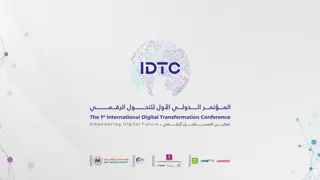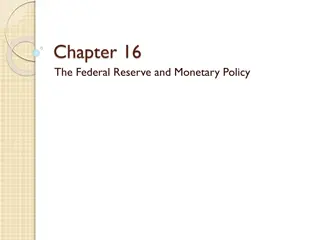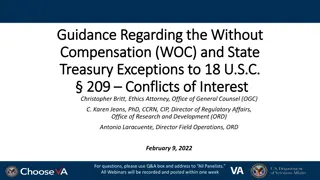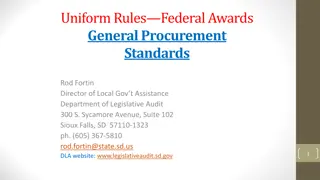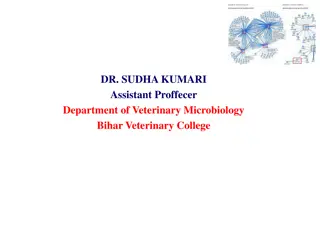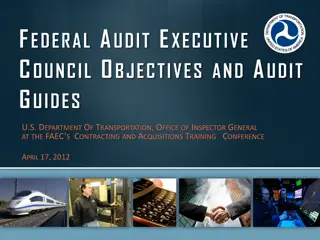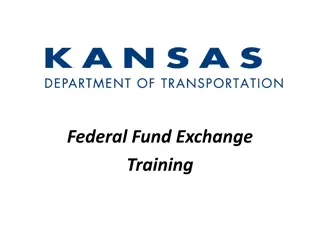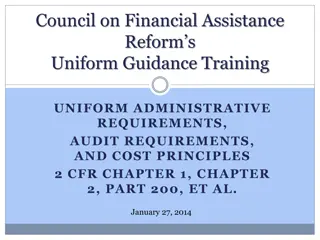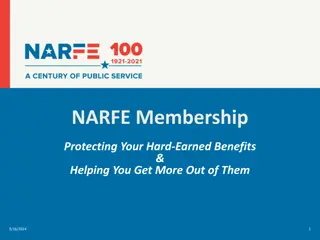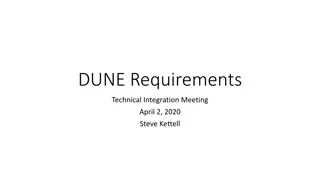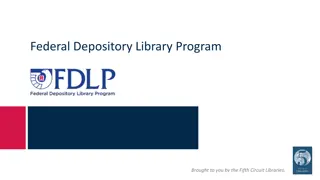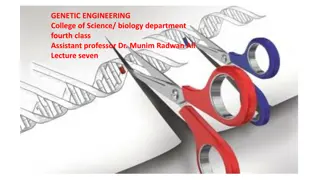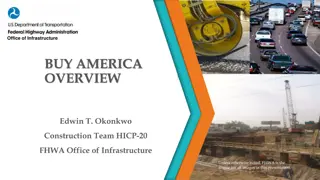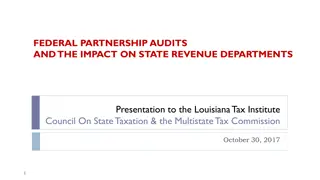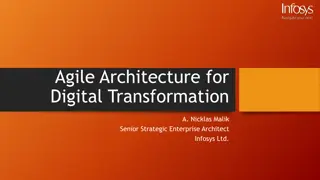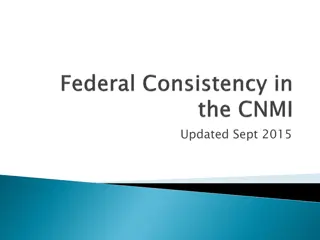MPOAC Transformation: Federal Requirements Impact Analysis
Investigation of the effect of federal requirements on FDOT's road programs, focusing on affected projects, compliance costs, and potential approaches for utilizing federal funds. The study used various methods to assess the impact, revealing significant findings and recommendations for improving the efficiency of state-funded projects.
Download Presentation

Please find below an Image/Link to download the presentation.
The content on the website is provided AS IS for your information and personal use only. It may not be sold, licensed, or shared on other websites without obtaining consent from the author.If you encounter any issues during the download, it is possible that the publisher has removed the file from their server.
You are allowed to download the files provided on this website for personal or commercial use, subject to the condition that they are used lawfully. All files are the property of their respective owners.
The content on the website is provided AS IS for your information and personal use only. It may not be sold, licensed, or shared on other websites without obtaining consent from the author.
E N D
Presentation Transcript
Text Presentation to the MPOAC Transformation of Our State Pre-Construction Process April 2015
PURPOSE Federal Requirements Impact Analysis To investigate the effect of federal requirements relative to state requirements on FDOT s portfolio of road programs: What projects are affected What federal requirements have impact How much time and money does compliance with federal requirements cost Objective To provide analysis to support potential consideration of different approaches to utilizing federal dollars Goal 1. Rapid diagnostic that focused on the schedule impact of most significant federal requirements 2. Guidance on how to segment and prioritize federal and state-only projects Scopes 3. Design of improvement initiatives improving the efficiency and effectiveness of the state-only process 1
The study used multiple methods to assess the relative impact of federal requirements Sampling of FDOT projects using Federal- State pairs 1 FDOT portfolio analysis 2 External professional interviews 3 External comparable interviews 4 Fed v. State Comparison via project sampling 59 representative federalized projects compared to 23 non- federalized projects on cost and schedule District interviews to understand gaps Portfolio analysis for 4 main project types Projects clustered into Widening, New Alignment, Interchange, and Bridge Funding source used as a proxy for federalization Interviews with supporting industry Interviews with professional organizations in FL Understand how question of federalization affects other industry players Interviews w/ public and private comps Interviews with other States that have tackled same issue Interviews with private industry in FL that deal with similar environment 2
Significant findings Most if not all projects are being prepared as though they will be federally funded Not all projects need to follow the federal process (be federally funded) Projects that are implemented following a state only process must remain state funded through construction Majority of time/cost savings is in PD&E Overlapping the PD&E and Design phases for state funded projects realizes the most time/cost savings State funded PD&E process can be further improved to reduce time and costs Standardizing state funded PD&E schedules will improve efficiency and improve quality of final products 3
While only 55% of projects use federal funding, FDOT has an explicit procedural guidance to federalize as many projects as possible Projects with different levels of federal funding % of project funded with federal funds Has some federal funding 2,743 100% state funded 55% of projects are projected to have Federal funding 1,765 482 285 299 160 78 70 55 53 42 0% 10% 20% 30% 40% 50% 60% 70% 80% 90% >90% It is recommended the District apply the requirements for a federal process any time there is a possibility in which federal funds could be used on any phase of a project or if FHWA, FRA or FTA approval is going to be required. - FDOT PD&E Manual (Part 1, Ch 10) Source: 10-2.1 Determination of Federal Action; FDOT PD&E Manual; 2014-2018 Work Program 4
The focus of the study is on the share of projects in FDOTs portfolio where federalization is not mandatory and FDOT therefore has discretion about whether to federalize 2014-2018 Work Program $B 39 16 23 5 15 2 1 2 9 4 Work Program Work Program Non- Roadway Roadway Interstate1 Turnpike Off-System2 Projects over which FDOT has discretion to federalize Projects with dedicated federal funding sources3 Projects that likely require little PD&E work4 Choice to federalize has impact Always federalized Almost always state funded Almost always has some federal funding FDOT will continue to make the most of these funds The choice whether to federalize is likely not impactful Explanation: For some share of the $9B, FDOT will still need to go through the federal environmental process because either: 1) The project triggers a federal action under NEPA (e.g. needs a Coast Guard permit) 2) The project touches land over which the federal government has jurisdiction (e.g. interchange with interstate) 1 For interstate, turnpike, and off-system, the value includes all non-preservation and non-ops projects 2 Defined as estimate of county roads 3 Includes preservation 4 Likely includes operations and ITS Source: Estimates from 2014-2018 work program 5
Decision tree for when to use state funding only Federalize project: do NEPA in concert with USDOT/FHWA and spend federal money on ALL phases, including PD&E Do NEPA document for PD&E with only state money1 No choice but to spend federal money (e.g., off- state highway system) Candidate projects for SEIR and only spending state money through full life cycle Federal action by USDOT requires NEPA, e.g. interstate To There is a dedicated and specific federal funding source (e.g., federal bridge program) that can t be used elsewhere determine what type of money to spend on the project If federal money remains once we reach this bucket, put federal money first on projects with bigger spend but lower benefit, beginning with lowest Class of Action Federal action by another agency requires NEPA2 What type of PD&E doc to do? FDOT can choose the funding source All other 1 Do NEPA document with state money only, thus later phases of project are not automatically federalized, yet flexibility is maintained for using federal money in subsequent phases 2 Applies in the case of needing a federal permit. The lead agency for issuing the permit should be the lead agency for NEPA approvals. Since no federal dollars are used on PD&E, no USDOT federal action is triggered. Therefore USDOT/FHWA is not required to be involved in NEPA document review or approval. 6
Federalized projects sampled lasted 1.8x-3.5x longer in pre-construction than State projects Average length of pre-construction for project samples Months 108 102 89 1.8x 42 75 2.0x 68 PD&E 42 2.4x 59 52 40 16 38 22 15 60 3.5x1 48 43 41 DES 35 10 PD&E 30 22 0 DES 10 Turnpike Federalized Bridge Turnpike Interchange Federalized Turnpike Federalized Widening Turnpike New Alignment Federalized 1 No PD&E was available for Turnpike projects, so the 3.5x difference is calculated only during the Design phase Source: Sampled projects provided by all 8 FDOT Districts for purposes of this comparison 7
Districts selected 44 projects to be programmed as state-funded in the current gaming cycle, resulting in an estimated 97 years of time saved, just by following the state process Just from putting these projects through the current state process, as demonstrated by the Turnpike, we d expect to save 97 years of pre-construction timing Projects identified for state-only funding # of projects across all districts 8 44 44 80 By further streamlining the state process, we can expect time savings of up to 247 years2 2-5 SEIRs in Fiscal 2014 Existing state- only eligible projects in gaming cycle 15 New projects added in gaming cycle 15 Not programmed as state-only1 Programmed as state-only (NFE) in gaming cycle 15 1 Projects removed from state-only eligibility at the discretion of the districts due to: uncertainty of future funding needs, availability of current or future eligible state funds, existing plans to use federal funds 2 Range is based on calculating time savings for the 44 projects through a comparison of average federal pre-construction durations by expected environmental class of action vs. 1) average current state process durations, as shown by Turnpike projects used in project sample and Districts 4 & 6 Value Engineering on the fed process, and 2) streamlined state process with PD&E & Design overlap Source: Baseline for days saved comparison derived from Federal Impact Analysis, Summer 2014 8
We have defined an improved state process expected to cut pre-construction time by 60-75% Both PD&E and Design Planning Procurement PD&E activity Design activity Existing process: average duration of 94 months across all project types Const. letting LDCA Planning PD&E procurement PD&E Design procurement Design New process : average duration of 28 months across all project types Federally- funded: Follow current process E District secretary signs SEIR Procurement PD&E D F Initial data collection and analysis State-funded A Const. letting Design SWAT planning meeting ROW survey and mapping, acquisition SWAT project kickoff C B ETDM programming screen Source: Note: average durations are calculated across different project types, actual expected project duration varies by project. 9
We have been working for the past year to streamline the preconstruction process, and we will continue to do so Implement transformation across districts Build foundation for implementation Support implementation of improved process across districts Build capabilities across districts Continue to manage process and monitor performance centrally Project Diagnostics Define lean project planning process and create tools necessary for implementation Build management structure to support transformation Problem Definition Assess opportunity Design blueprint for change Identify whether federal requirements have an impact on project cost and duration Summer 2014 Fall 2014 Today Rest of 2015 10
We have applied the new process to an initial set of ten projects and have already found 57% time savings, across all project types District # Time Savings % of Federal Benchmark Time savings from District workshops Procurement to Production duration Total years for ten projects 7 69% Type II CE EIS EA SEIR T 65% 95 4 59% 38 -57% 2 58% 3 56% 33 1 55% 40 23 52% 6 Pre-Workshop Post-Workshop 50% 5 Source: Source
Our transformation focuses on more than just the improved state process Process Design Management infrastructure Define a streamlined process that is easy to use and adaptable Support change with appropriate systems, teams, and infrastructure FDOT s public mission Organization and Skills Culture Build support for a new way of working Ensure the organization has the required training and support to succeed
Districts have each nominated a State-Wide Acceleration and Transformation (SWAT) Team to lead the effort in improving how we operate Current SWAT Team Organization Chart Feb 2015 Bernie Masing Bill Hartmann Gwen Pipkin Steve Walls Joe Lauk Henry Pinzon Patrick Muench Joseph Chinelly Ronald Bell Text Text D1 Turnpike Paul Marlon Bizerra Satchfield Nelson Bedenbaugh Stephen Browning Kathy Thomas Will Watts Jim Knight Robin Rhinesmith Karen Demeria D2 D7 Text Text Kirk Bogen Frank Chupka Waddah Farah CENTRAL TEAM Marjorie Kirby (lead) District SWAT Leads Ken Morefield Kendra Sheffield Xavier Pagan Bob Crim Paul Hiers Richard Moss Bill Henderson Regina Battles Joy Swanson April Williams Brandon Bruner Jason Crenshaw Craig James Aileen Boucle D6 D3 Teresita Alvarez Scott Golden Text Text Dat Huynh Alejandro Casals Linda Glass Johnson D5 D4 Brian Stanger Steve Braun Bill Walsh Steve Friedel Jeff Cicerello John Olson Ann Broadwell Scott Peterson Text Amy Sirmans Steve Smith Beata Stys-Palasz Text Richard Young Leslie Wetherell District SWAT Teams: Support the Projects Hold SWAT planning and project kick-off meetings to focus the project scope and schedule Drive improvement through structured problem solving Push District innovations state-wide through Central SWAT Communicate process changes to PMs and Consultants Central SWAT Team: Support the Districts Collect expertise and best practices across Districts Identify and deploy tools and programs to encourage continuous improvement Monitor progress of implementation Work with District SWATs to facilitate state-wide training
FDOT leadership will track success of the projects in meeting reduced schedule targets Performance Management The dashboard will be updated and reviewed regularly by leadership The dashboard tracks time from Project Advertisement (200) to Production (204) We can compare a project to an estimate of what it would have been if it had been federalized We will track each project against our aspiration for its duration under the new process
We created a Quick Guide to support staff in implementing the improved state process The Quick Guide includes information on Each step of the improved state process The teams that support the transformation and the performance management system Expectations for roles of everyone involved in the process Tools to support teams, such as scoping checklists, sample meeting agendas, and example schedules Information to support each District to develop a culture of innovation and process improvement
These changes are only the beginning we have embarked on a long journey of continuous improvement Continuous improvement of the process 1. Segment Federal vs. State Implemented and in Work Program Instructions 2. Improve scheduling of high-level blocks We are here 3. Optimize process within blocks Find waste within each process bucket 4. Change the way we operate Long term transformation Moving the timing of big blocks (e.g. PD&E and Design) Change the detailed process E.g. New ways to engage the public
Questions? 17


